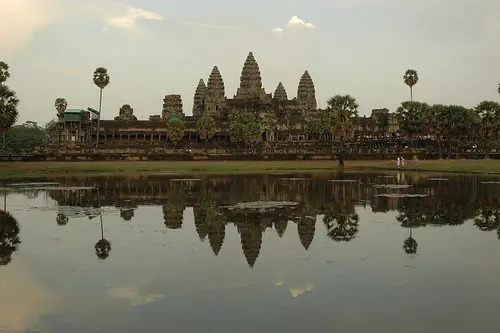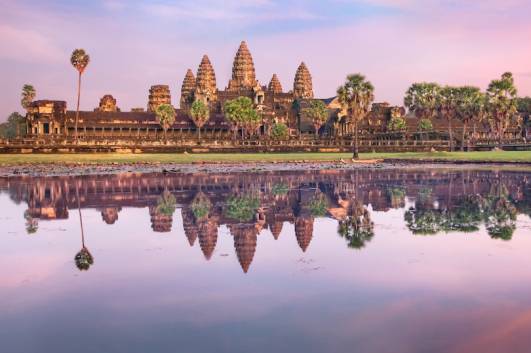Angkor what located at Angkor in Northwestern Cambodia, is the largest temple in the world. Angkor was the Capital of the ancient Khmer Empire. The temple was dedicated to the Hindu God Vishnu by the Khmer king Suryavarman II, who reigned between AD 1131 and 1150.
The Temple was constructed over a period of 30 years, and illustrates some of the most beautiful examples of Khmer and Hindu art. Covering an area of about 81 hectares, the complex consists of five towers, which are presently shown on the Cambodian national flag. These towers are believed to represent the five peaks of Mount Meru, the Home of Gods and Center of the Hindu Universe. Angkor what features the longest continuous bas-relief in the world, which runs along the outer gallery walls, narrating stories from Hindu Mythology.
With the decline of the Khmer Empire, Angkor what was turned into a Buddhist Temple and was continuously maintained, which helped its preservation. In 1992, the UNESCO World Heritage Committee declared the monument, and the whole city of Angkor, a World Heritage Site.
The Temple was constructed over a period of 30 years, and illustrates some of the most beautiful examples of Khmer and Hindu art. Covering an area of about 81 hectares, the complex consists of five towers, which are presently shown on the Cambodian national flag. These towers are believed to represent the five peaks of Mount Meru, the Home of Gods and Center of the Hindu Universe. Angkor what features the longest continuous bas-relief in the world, which runs along the outer gallery walls, narrating stories from Hindu Mythology.
With the decline of the Khmer Empire, Angkor what was turned into a Buddhist Temple and was continuously maintained, which helped its preservation. In 1992, the UNESCO World Heritage Committee declared the monument, and the whole city of Angkor, a World Heritage Site.


